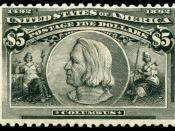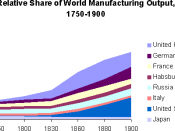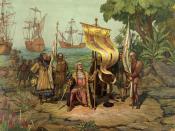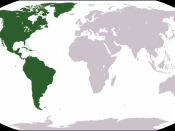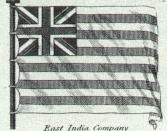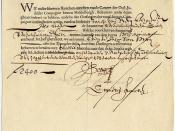two technical innovations which helped generate elements of the new world view. The first was the in possibility of measuring time independently of where one is, what the weather is, what time of year it is, etc. It is neutral, abstract. Fourth, the clock sets up the possibility of universal time vention of the clock; the second, perspective.
Perspective strengthened (some people argue, created) the emerging idea of the individual (the fixed eye) looking out at the world -- a bit like God looking down at the world. More importantly, for us, it helped foster the idea of abstract space. What is abstract space? Abstract space (like abstract time) is a space within which there are objects placed. It naturally looks as if we are all the time in a space filled with objects Copernicus then Galileo"æDescartes"æNewton CLASH OF ECLOGIES - Middle Ages, in Europe and elsewhere in the Far East, there was a desperate demand for spices of all kinds, but particularly spices like pepper, cloves, and nutmeg// main single source for these spices were what is called the Spice Islands in Southeast Asia (northwest of Australia It was this armed force, which had the ideals of a Christian crusade against heretics burned into their soul, which accompanied Christopher Columbus on his voyages.
One of the important ecological differences between the Old World and the New was that there were hardly any large domesticated animals, and especially animals useful in farming. The only three of any consequence were the llama (in Peru) which was used for heavy lifting and wool, the guinea pig (which was used a little bit as a food source), and a domesticated species of dog (which has gone extinct).
three most important structural results for the New World were: (1) because there were not nearly as many losses of mainland native peoples as on the islands, and they were already organized into agricultural tribute systems, (2) the discovery of silver mines in Potosi in Peru and in in north central Mexico. These huge mines provided immense wealth for the Spanish economy throughout the later 16th and 17th centuries(3) the ecological spread of pigs, cattle, and horses throughout North America was critically important The spice, sugar, slave, fur, and other trades required substantial investments in ships and sailers, traders and armies in order to protect these new "resource extraction" industries. Within a very short time, companies like the East India Company were huge concerns, rivalling many governments, with private armies and small wars. We can see in these companies the beginnings of what would become the financial arm of the coming Industrial Revolution. And in the machines of the sugar trade; and what were called the "factories" where the goods were piled up for shipping and trading, other elements of the Industrial Revolution were born.
